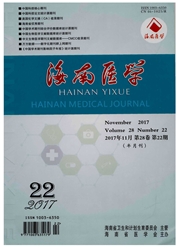

 中文摘要:
中文摘要:
目的:探讨稳定的小鼠脑缺血再灌注损伤模型的制备和评价方法,评价缺血时间的延长对缺血再灌注损伤的影响。方法采用硅胶线栓暂时性阻塞小鼠大脑中动脉制备脑缺血再灌注损伤模型,通过神经功能评分、TTC染色、伊文氏蓝染色、Tunel染色、免疫荧光染色等方法评价45 min和60 min缺血再灌注时间所导致的梗死体积、神经功能、神经元凋亡以及氧化应激水平的差异。结果与45 min组相比,60 min缺血再灌注损伤使脑梗死体积增加了78.21%、神经功能评分升高了31.66%,神经元凋亡比例增加了44.49%,血脑屏障的破坏程度和氧化应激水平随着缺血时间的增加也明显增高。结论通过严格的手术操作和严密的术中监测,可以获得稳定的小鼠脑缺血再灌注损伤模型,缺血时间的延长显著增加了脑组织的损伤。
 英文摘要:
英文摘要:
Objective To establish a murine cerebral ischemia-reperfusion model and a scientific evaluation system for the model, and to evaluate the effect of prolonged ischemia time on ischemia reperfu-sion injury. Methods Transient middle cerebral artery occlusion was used for establishing the murine cerebral ischemia-reperfusion model. Neurological score, TTC staining, Evan's blue staining, Tunel staining and immunofluo-rescence technique were used to compare the infarct volume, neurological deficit, blood brain barrier (BBB) disrup-tion, neuronal apoptosis and oxidative injury between 45 min ischemia and 60 min ischemia. Results Compared with 45 min ischemia, 60 min ischemia increased infarct volume by 78.21%, neurological score by 31.66%, neuronal apoptosis rate by 44.49%, and significantly exacerbated BBB disruption and oxidative injury. Conclusion Strict op-eration and rigorous intraoperative monitoring can obtain stable murine ischemia-reperfusion injury model. Prolonged ischemic time led to worsened brain injury.
 同期刊论文项目
同期刊论文项目
 同项目期刊论文
同项目期刊论文
 SHPS-1 deficiency induces robust neuroprotection against experimental stroke by attenuating oxidativ
SHPS-1 deficiency induces robust neuroprotection against experimental stroke by attenuating oxidativ 期刊信息
期刊信息
